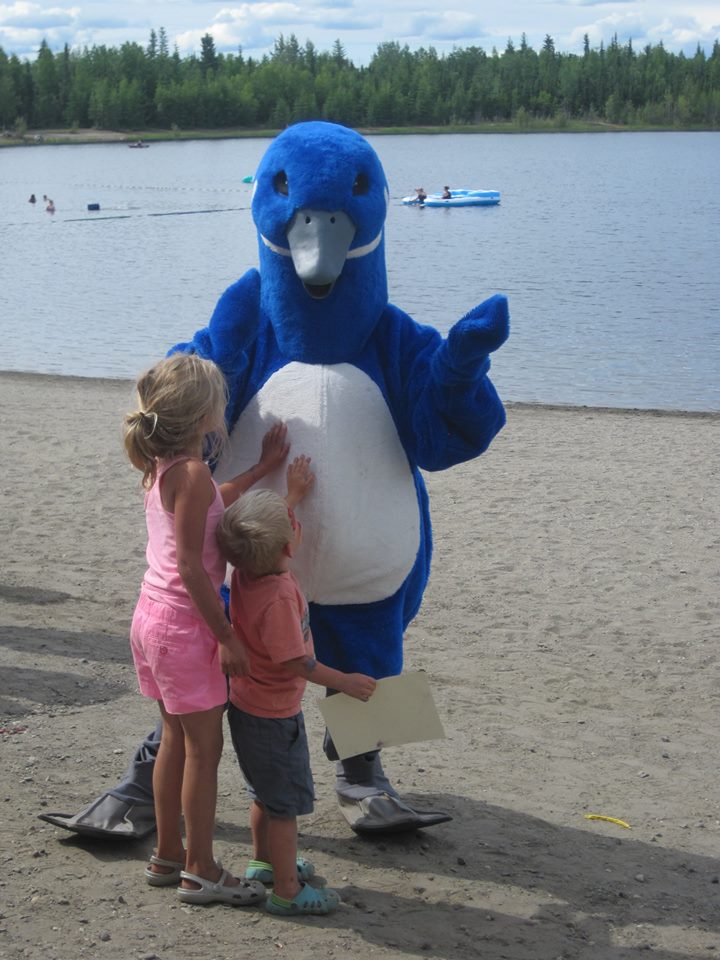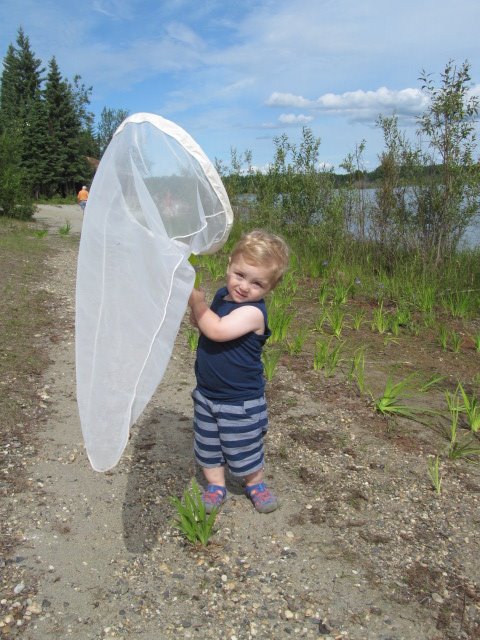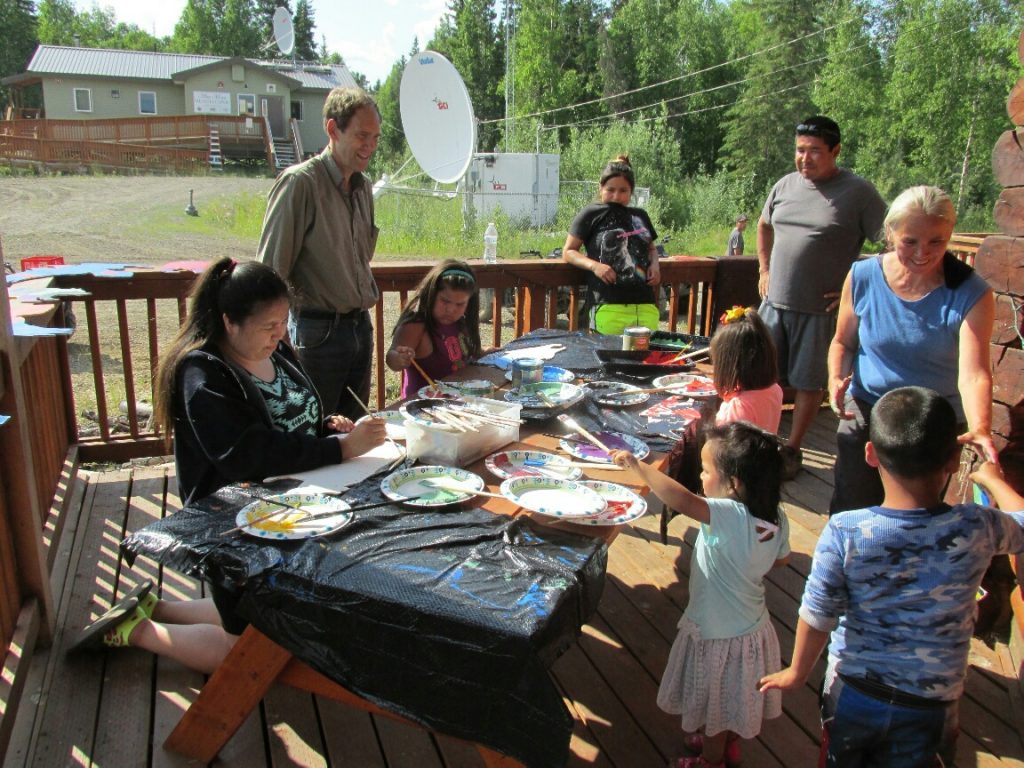The first ever Friends Discovery Trip to the Kenai National Wildlife Refuge was a success! Eleven Friends met on a rainy Saturday fall morning with the Kenai Refuge manager Andy Loranger and staff to learn about the unique volunteer opportunities within the Refuge: from front desk, to adopt a trail, to refuge advocacy. This most visited and accessible refuge in Alaska has experienced budget and staff cutbacks. Visitor center manager Leah Eskelin shared a laundry list of volunteer opportunities suitable for locals with an afternoon to spare or Anchoragites who could give a weekend.
The clouds parted just in time for us to drive through golden fall leaves to launch our canoes at the Swan Lake Canoe Route trail head, 20 miles north of Sterling. We paddled across Canoe Lake to set up camp for our evening activities. Lots of awesome Dutch oven cooking and late night fraternizing around the campfire followed, including Robert Service poems dramatized by Friend member Tom Choate. We were accompanied by two refuge staff who coordinated our volunteer trail clearing.
The next day, we paddled to Waterfall Lake to do some trail clearing and exploration of the lake and its’ lovely island. The calm and clear waters offered a perfect reflection of the beautiful fall colors of the lake.
(click to enlarge photos)
Barb Veeck reports, “As a new member, I felt that I gained awareness of the purpose of the Friends program and enjoyed meeting other members. It was fun to discuss future volunteer and group trip activities such as this one.
Prior to this trip, most of us were only familiar with 1-2 people in the group which hailed from Anchorage, Kenai, Anchor Point, and Homer. By the end of the trip we all felt we had new “Friends” and were already planning our next refuge trip.”
As a Board member and trip organizer, Poppy Benson says, “I felt we met the objectives of familiarizing ourselves with at least part of the vast and wonderful Kenai Refuge and its volunteer opportunities, increasing communication and collaboration with the Refuge, and facilitating and building relationships between Friends. I think refuge familiarization trips should be an annual part of the Friends program. Email me with your ideas for future refuge trips at poppybenson@alaskarefugefriends. This trip was cheap ($20) and easy because participants only needed a weekend and a way to get to Soldotna. Other refuges such as the Arctic Refuge would take more time and money.”
We encourage all of you to get out on a refuge through Friends sponsored trips or volunteer opportunities or with your own family. The Refuges need us and we need them.
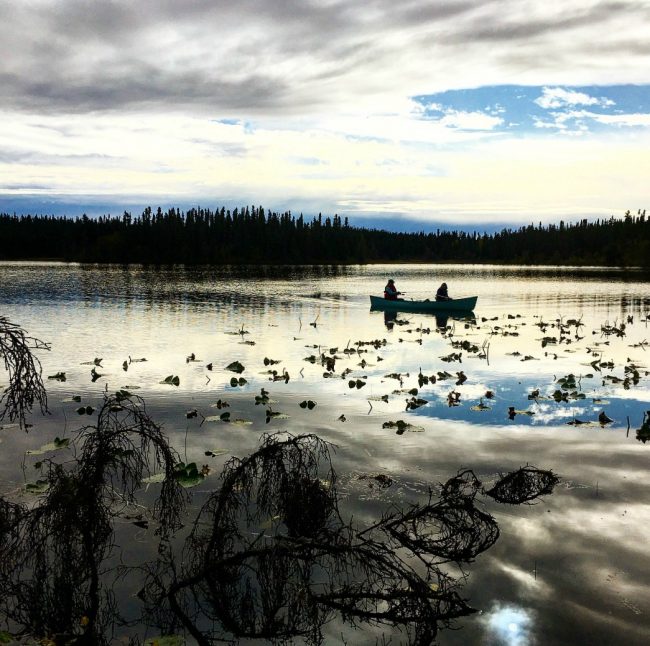
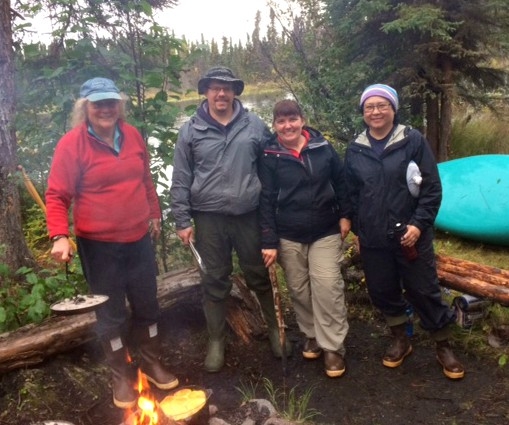
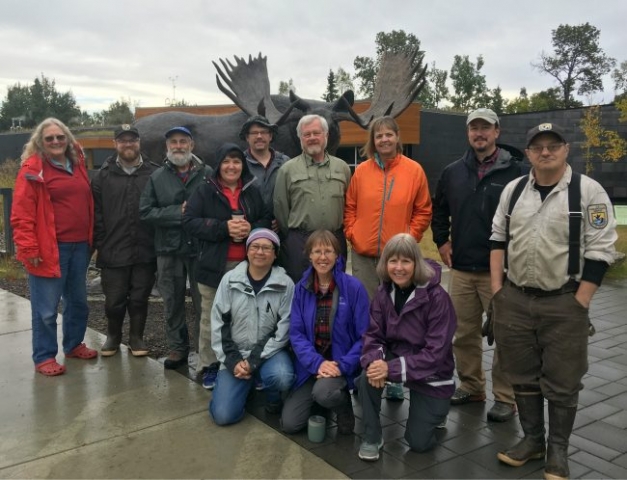

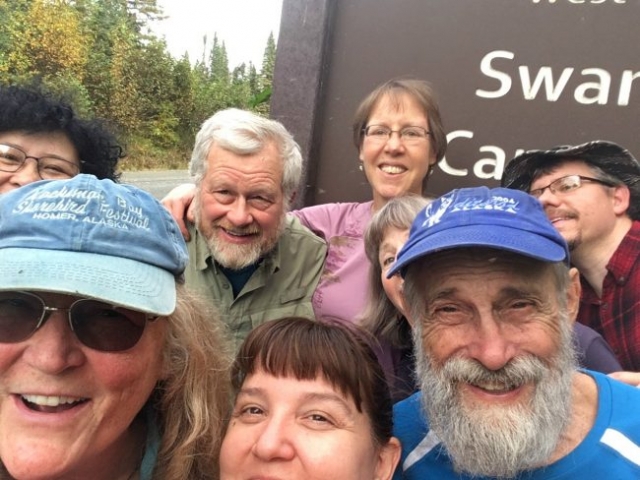
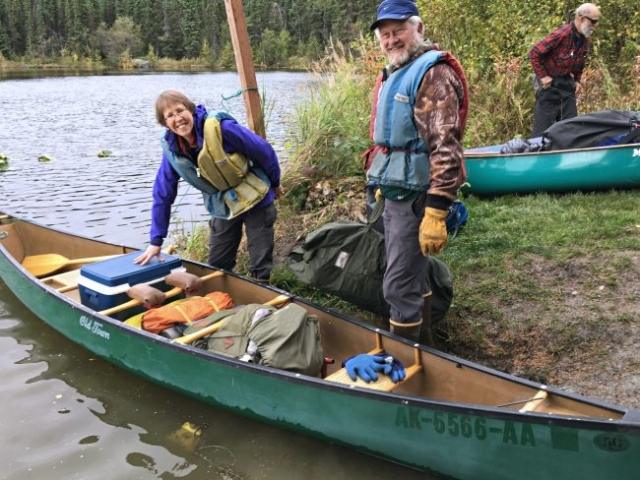
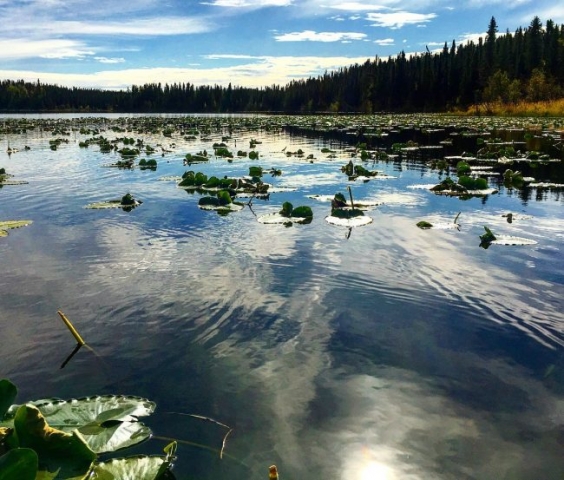
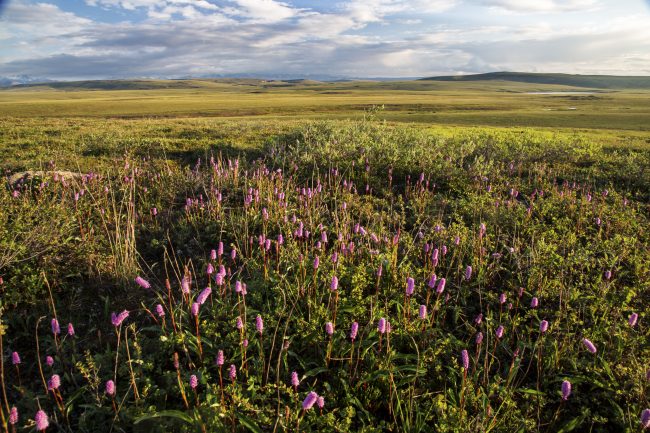

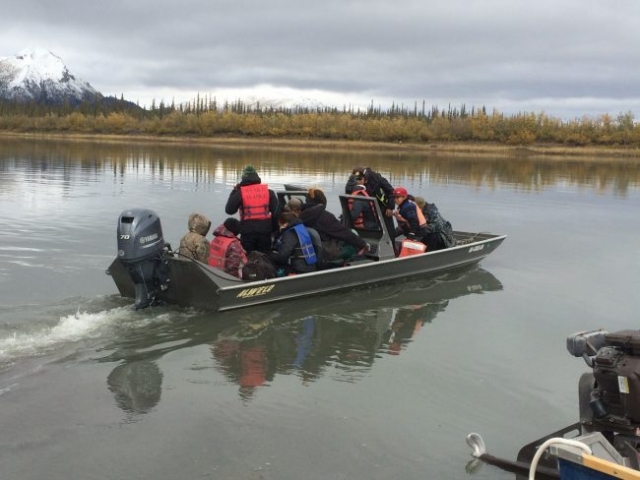
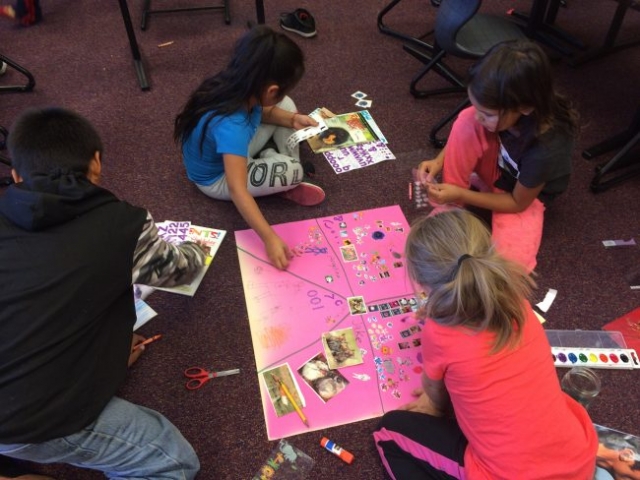


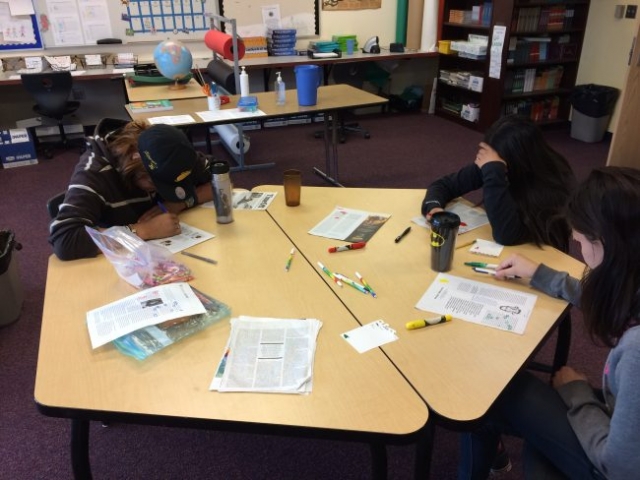

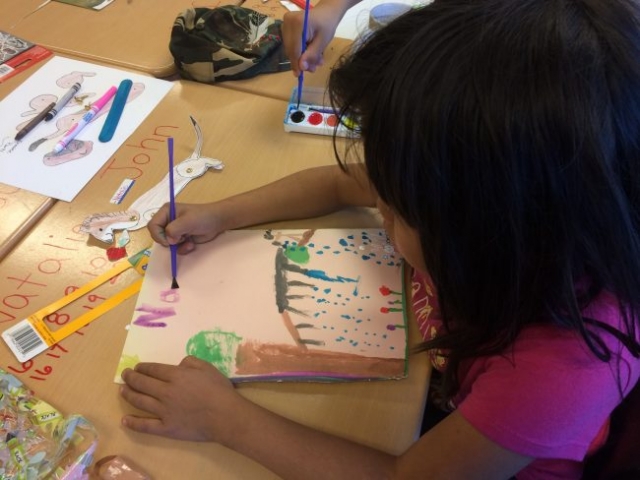

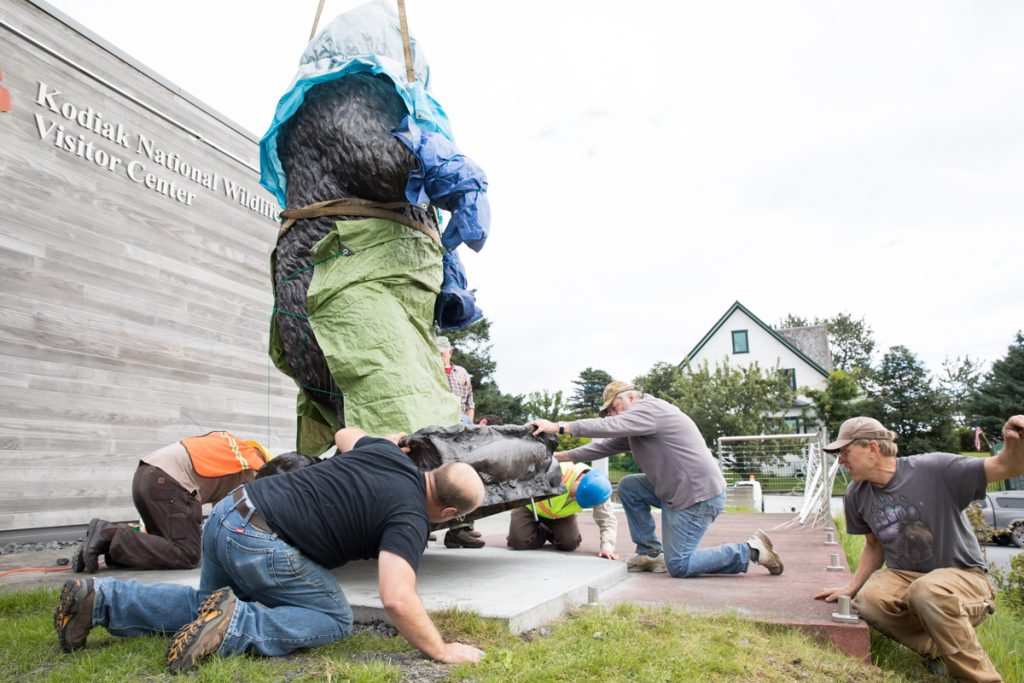


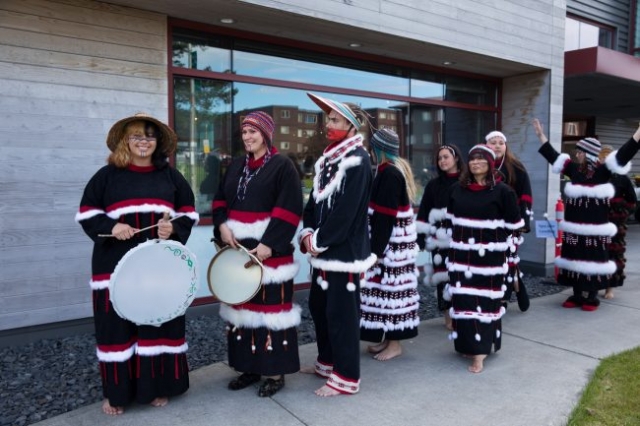


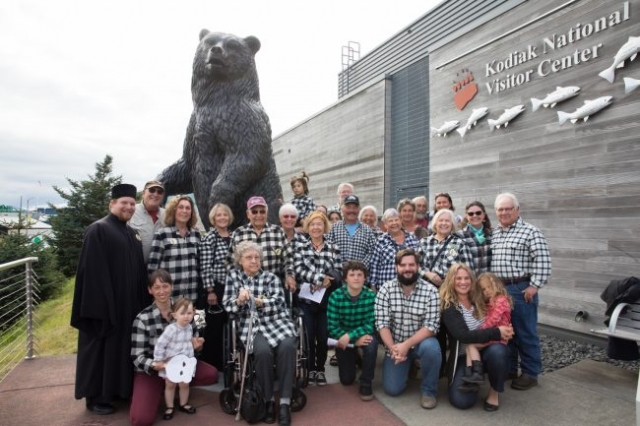

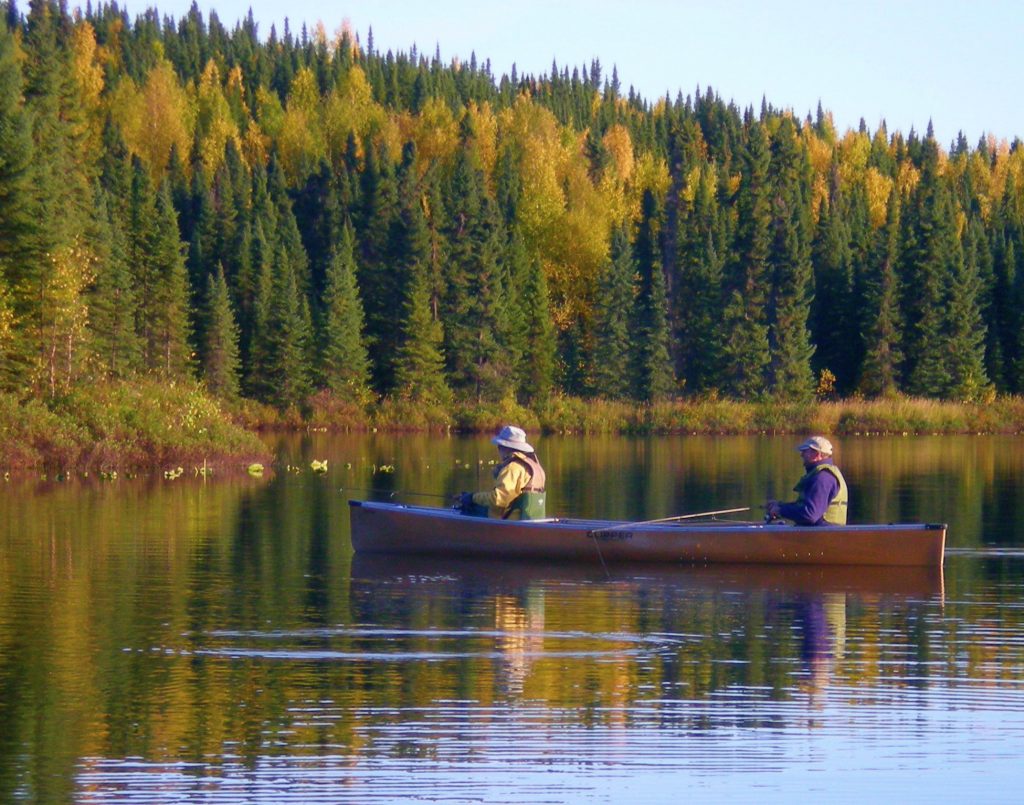

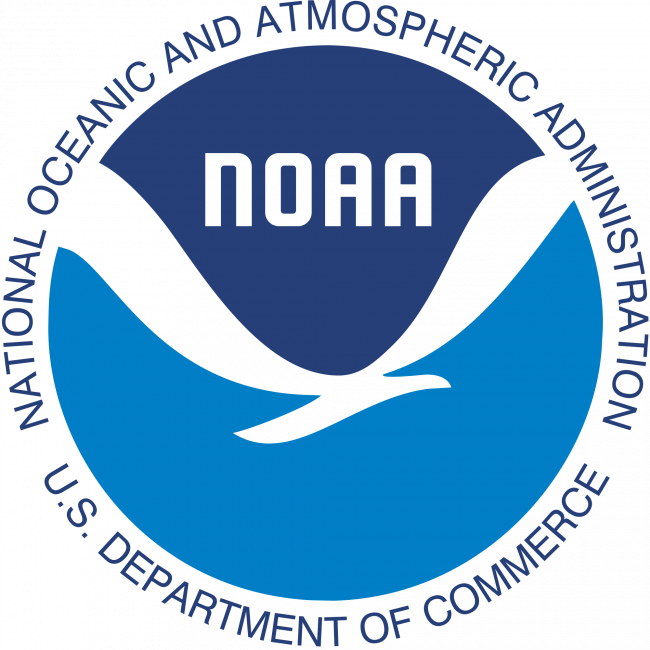

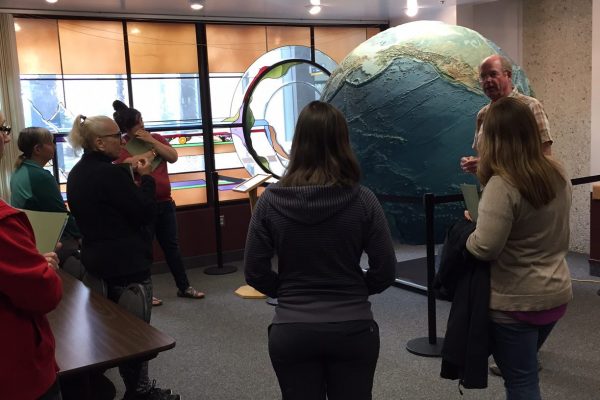
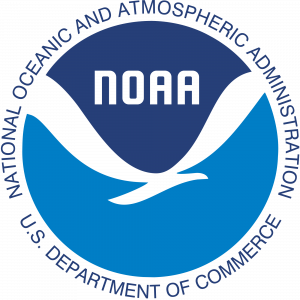 NOAA, the National Oceanic and Atmospheric Administration, has a mandate to educate in the Science, Technology, Engineering and Mathematics disciplines (STEM).
NOAA, the National Oceanic and Atmospheric Administration, has a mandate to educate in the Science, Technology, Engineering and Mathematics disciplines (STEM).

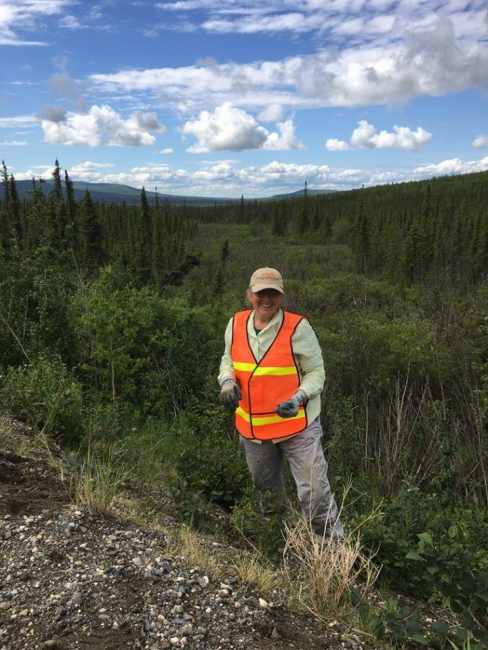
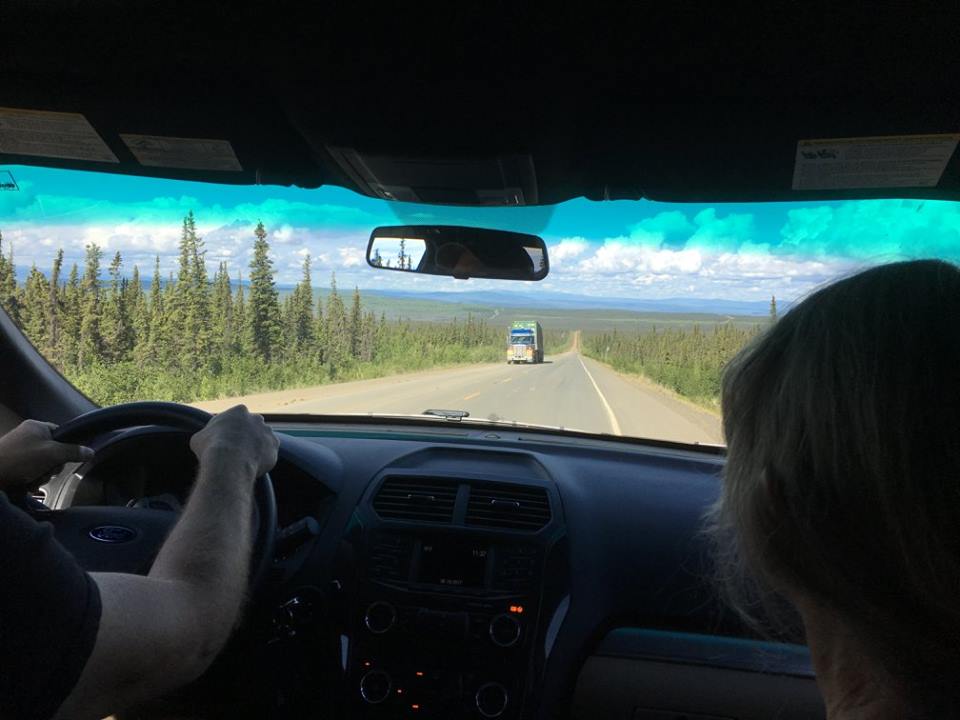



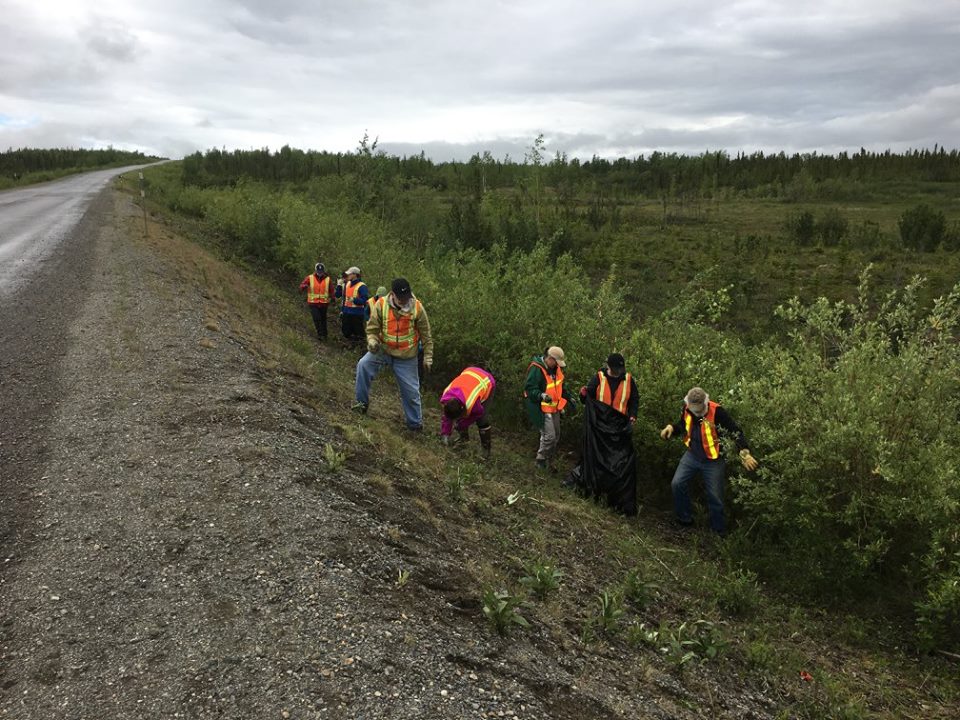
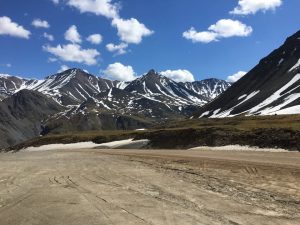
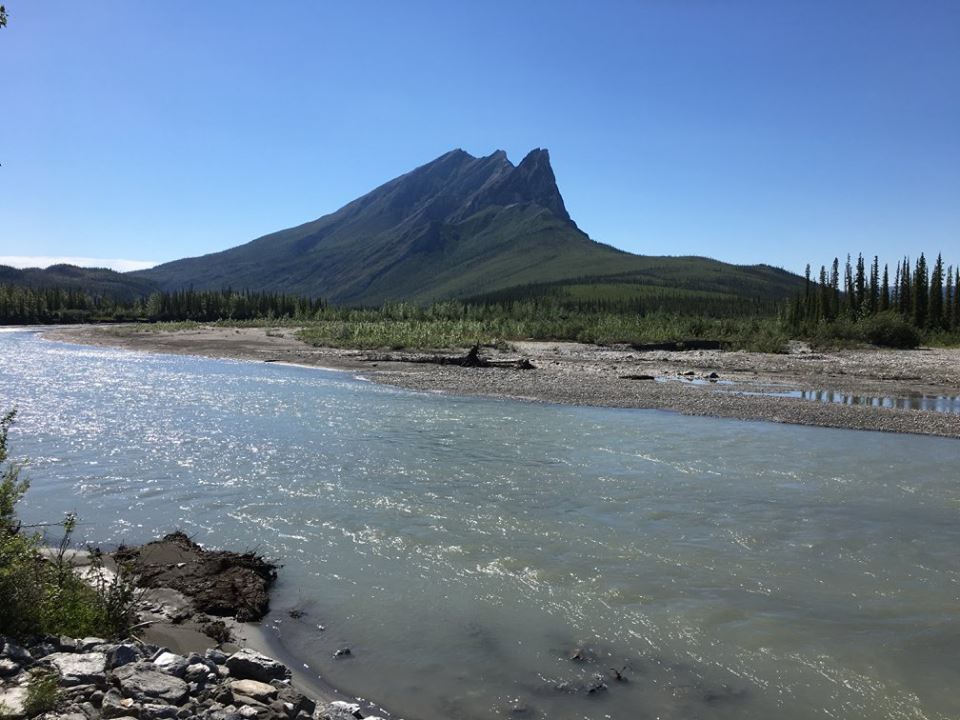
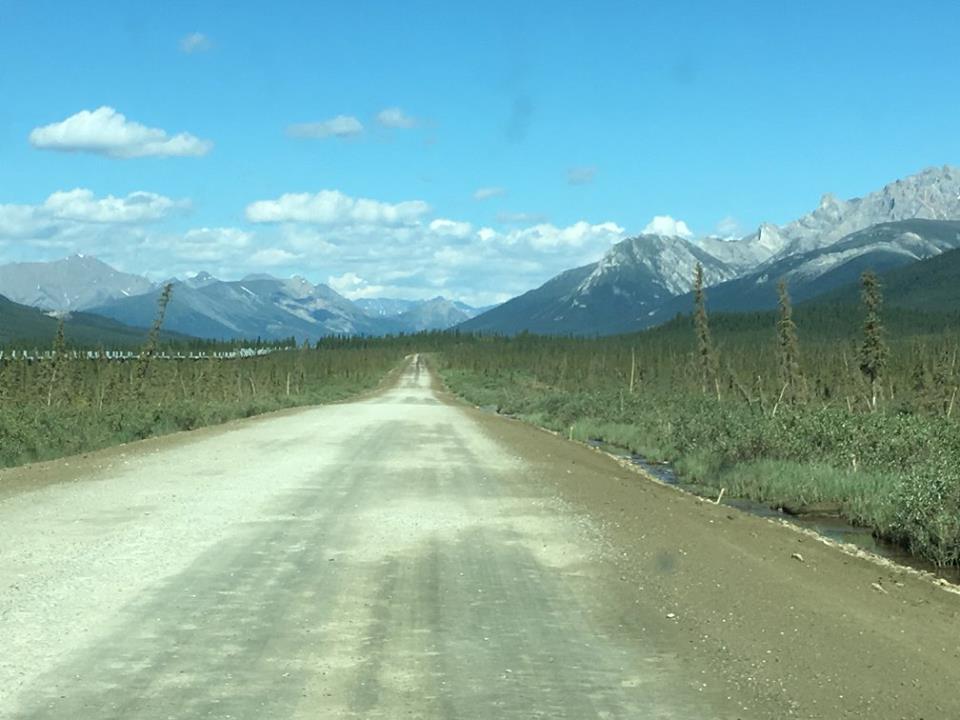

 Environmental Education Specialist Allyssa Morris says, “Thank you to everyone who came out to Dragonfly Day 2017. Returning families shared that “Dragonfly Day is the best event of the year. Special thanks to SCA Interns Megan, Morgan, Lily, and Angelina who did a superb job finishing last minute tasks and leading the craft stations. Sheila, Tina, and Steve took numerous photos. Morgan and Alfredo for wearing the Puddles costume in the heat- you are both rockstars! UAF grad student Adam for leading the popular aquatic bug station and lastly, to John Hudson and the Friends of Alaska NWRs for supporting this popular event and making it happen. A special thanks to Joe Morris, Friends Volunteer. See you next year at Dragonfly Day 2018! “
Environmental Education Specialist Allyssa Morris says, “Thank you to everyone who came out to Dragonfly Day 2017. Returning families shared that “Dragonfly Day is the best event of the year. Special thanks to SCA Interns Megan, Morgan, Lily, and Angelina who did a superb job finishing last minute tasks and leading the craft stations. Sheila, Tina, and Steve took numerous photos. Morgan and Alfredo for wearing the Puddles costume in the heat- you are both rockstars! UAF grad student Adam for leading the popular aquatic bug station and lastly, to John Hudson and the Friends of Alaska NWRs for supporting this popular event and making it happen. A special thanks to Joe Morris, Friends Volunteer. See you next year at Dragonfly Day 2018! “

